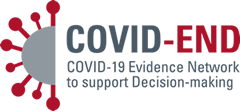Rapid response
Developing a CPG or HTA requires considerable time and effort. However, there are urgent situations that require the development of recommendations in a sufficiently short timeframe without neglecting trustworthiness. Different labels have been used to describe these recommendations, such as rapid advice, rapid recommendations, rapid guidelines, or rapid responses. Across these resources we will use the term rapid response to refer to all those documents that provide recommendations in a rapid fashion.
Thayer & Schünemann (2016) have defined four levels of urgency for developing guidelines. Levels 1 and 2 can all be considered rapid guidelines; levels 3 and 4 can be considered the conventional clinical practice guideline development process which usually ranges from 3 months to 1-2 years.
- Ultra-short emergency response (1-2 hours)
- Urgent response (1-2 weeks)
- Rapid response (up to three months)
- Routine response (More than 3 months)
See the article by Akl et al. (2020) and Qaseem et al. (2020) about methods for developing guidelines as part of an urgent response, including guidance when evidence is scarce and consensus-guidance is appropriate.
